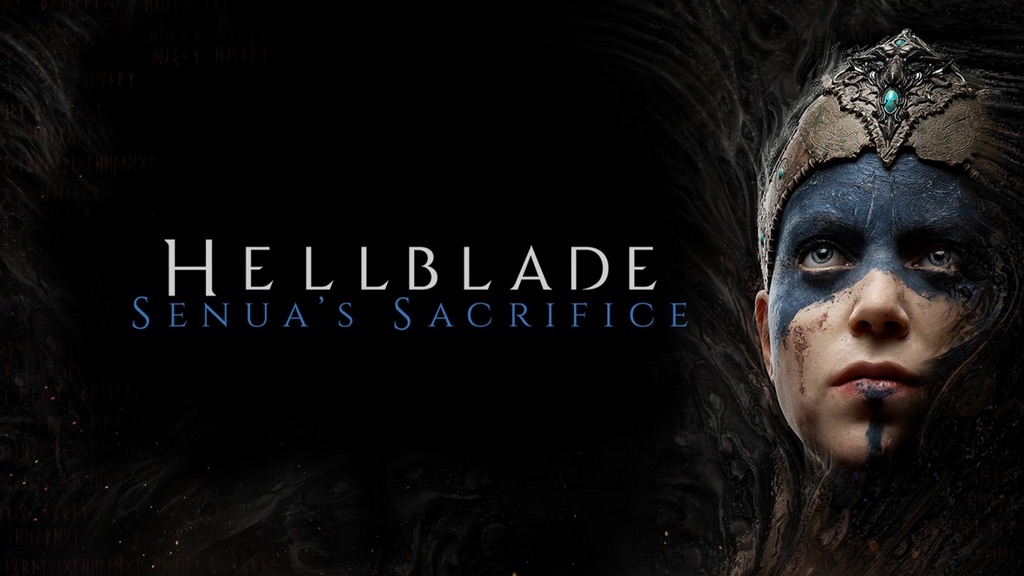
Hellblade: Senua’s Sacrifice is Ninja Theory’s first real success. After their string of financial failures with Heavenly Sword and their take on the Monkey King legend with Enslaved: Odyssey to the West; they burned a ton of goodwill with action game fans with their take on Devil May Cry with the absurdly titled reboot; DmC: Devil May Cry.
Ninja Theory has always been a game developer that strived for movie-like production values and story telling with a lot of cinematic flair. A lot of the time it came at the cost of making a good action game. After bungling so many of them, they finally gave up and focused on their strengths: production design and simplistic gameplay.
What kind of genre would they use their pillars to support? Hellblade: Senua’s Sacrifice would be a horror game that is set around 800 AD and uses the framework of the “hero’s journey” mono-myth to tell a story about a schizophrenic pagan woman wandering in the woods. Is Ninja Theory’s bold experiment a success? Read the Hellblade: Senua’s Sacrifice review to find out!
Hellblade: Senua’s Sacrifice
Developer: Ninja Theory
Publisher: Ninja Theory
Platforms: Microsoft Windows, Nintendo Switch, PlayStation 4, Xbox One (reviewed)
Release Date: April 10, 2018
Players: 1
Price: $29.99 USD
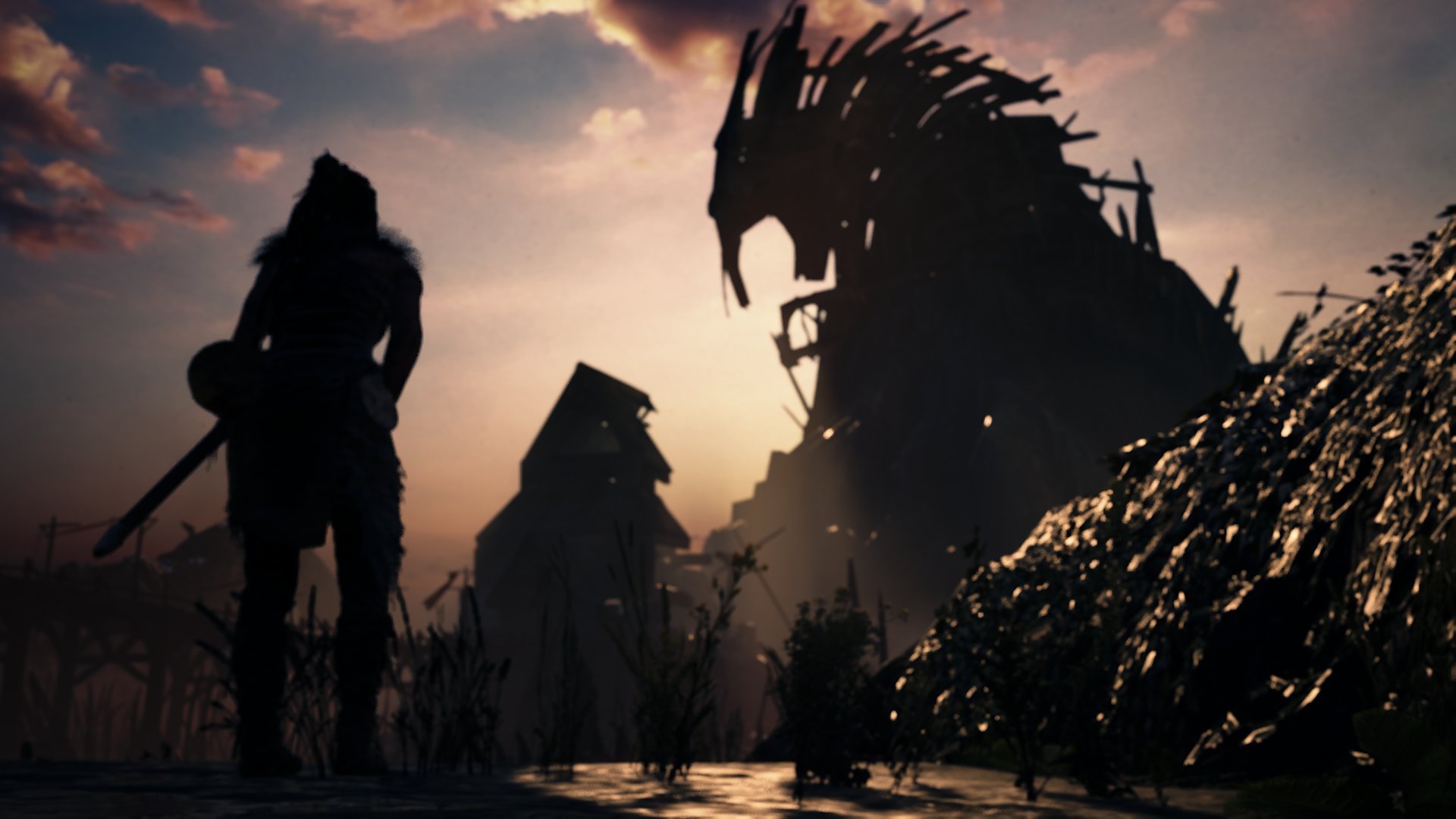
One thing that Hellblade: Senua’s Sacrifice does well is make an impressive statement as it begins. The unusual introduction to the broken protagonist is as if the player is one of the many voices in her head. Senua is a scarred and traumatized victim; while exiled for her increasing psychosis, her boyfriend and entire village got ravaged by Vikings.
During her time while surviving alone in the woods like a crazy person, she met Druth; another exiled crazy person who told her tales of the Vikings who enslaved him. Senua never actually saw the invaders and her only understanding of what the “Northmen” look like are the vague recollections of Druth’s insane stories and her own deranged interpretation from her fractured mind.
To Senua’s insane mind, she envisions herself doing battle with monstrous renditions of Vikings. To her, the alien culture and aesthetics are demonic and frightening. All Senua has to go off of is Druth’s stories of their Gods, the savage aftermath of her entire Pict village and mutilated remains of her love.
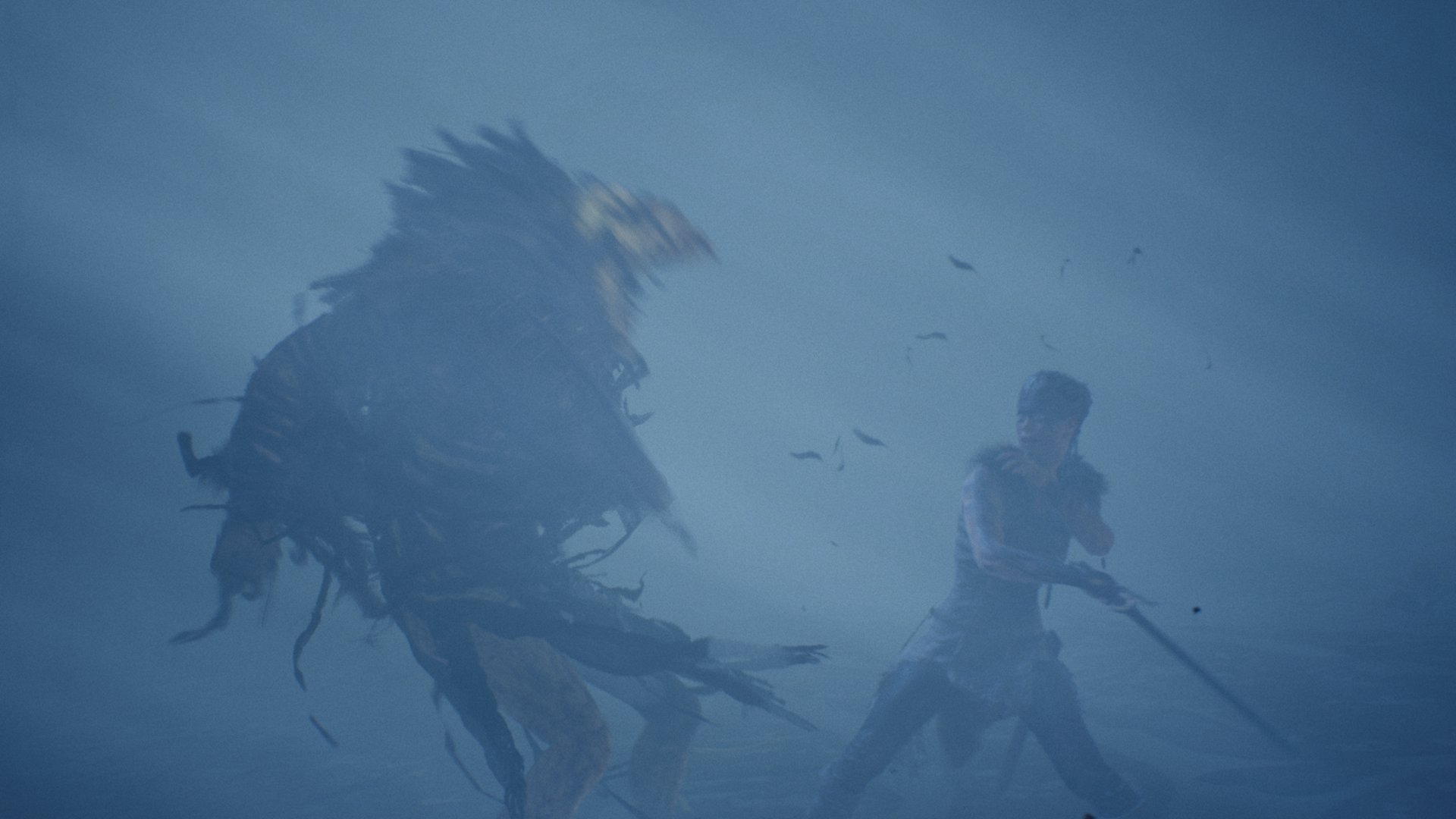
Senua embarks of a spirit quest for closure. Her greatest adversary is herself and unfortunately for the player, we are all stuck in her head for the duration of the journey. Senua is suffering from all kinds of mental problems. It is a miracle she has been able to live as long as she has considering her long list of debilitations.
Hellblade: Senua’s Sacrifice strives to make the player truly feel the living nightmare this sad woman lives with. The various techniques employed are surprisingly effective and manifest in the gameplay in many ways. Senua’s OCD is expressed with her seeing runes where there are none and aligning in-game geometry to form the rune in her mind is effectively a key to progression.
Disappointingly, there is always only one solution to these “find the rune” puzzle and that is counter to how seeing a pattern everywhere would work. It would have added replayability and enjoyment to find the various hidden runes in areas, but as it stands in the game; the area is usually highlighted so as to not get confused or lost looking in the wrong place.
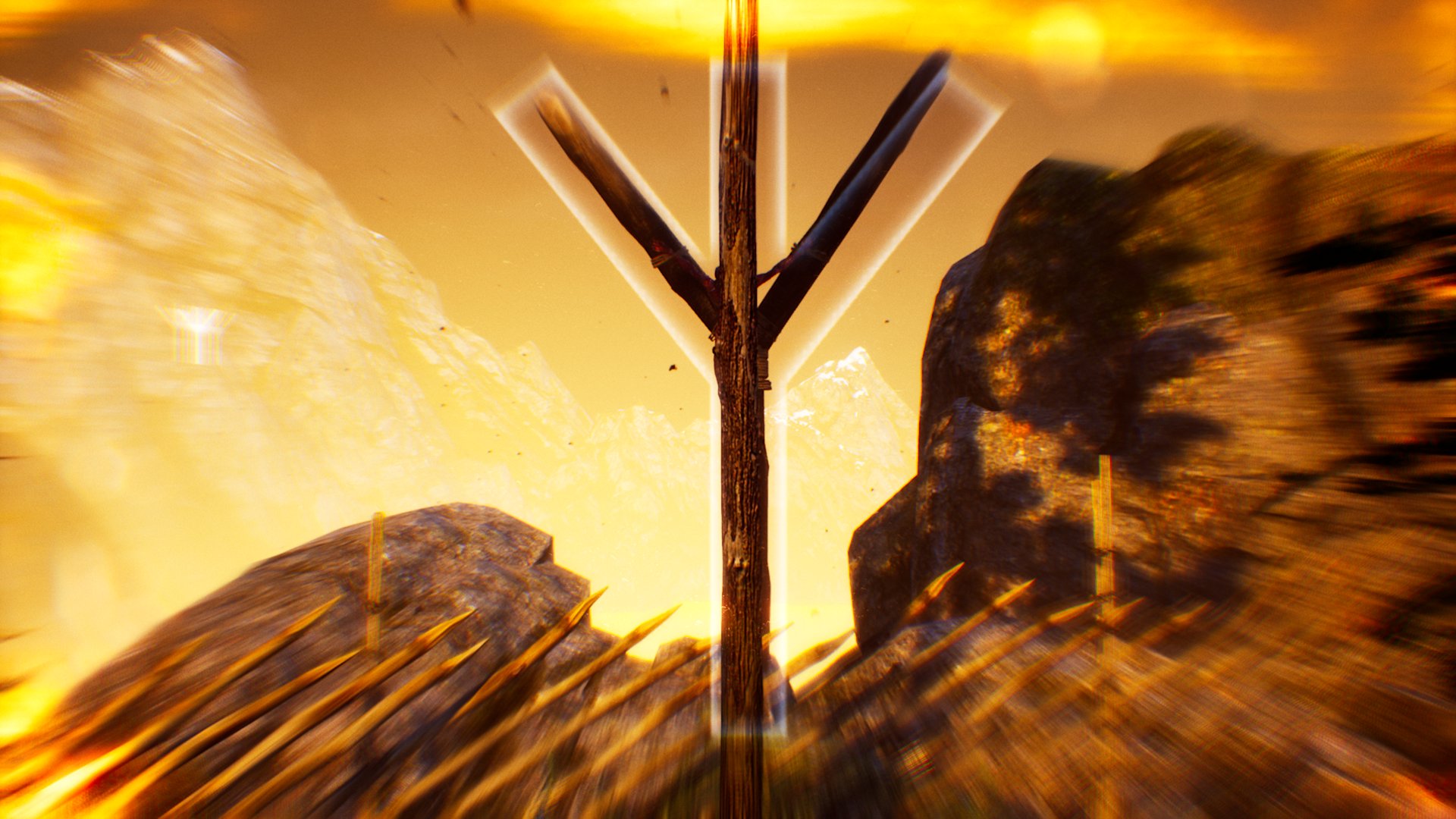
The other module to Hellblade: Senua’s Sacrifice‘s gameplay is combat which is weighty and satisfyingly violent. Regretfully, battling the figments of Senua’s imagination are very limited and scripted to happen on specific points.
Senua has light attacks and heavy attacks that can chain into one another which vary in speed and power. She also has a kick which also chains nicely mid-combo and is useful for breaking enemy guard and most importantly is blocking/parrying. A successful parry can lead into a light or heavy counter attack or reflect projectiles back towards a foe.
Other abilities like Senua’s various running attacks are rarely used and her “devil trigger”-like hyper mode is effectively an “I win” button when she can use it. When powered up, she can stun-lock most enemies, gains invincibility and becomes faster. Players are unstoppable when she gets like this negates most of the challenge in the game.
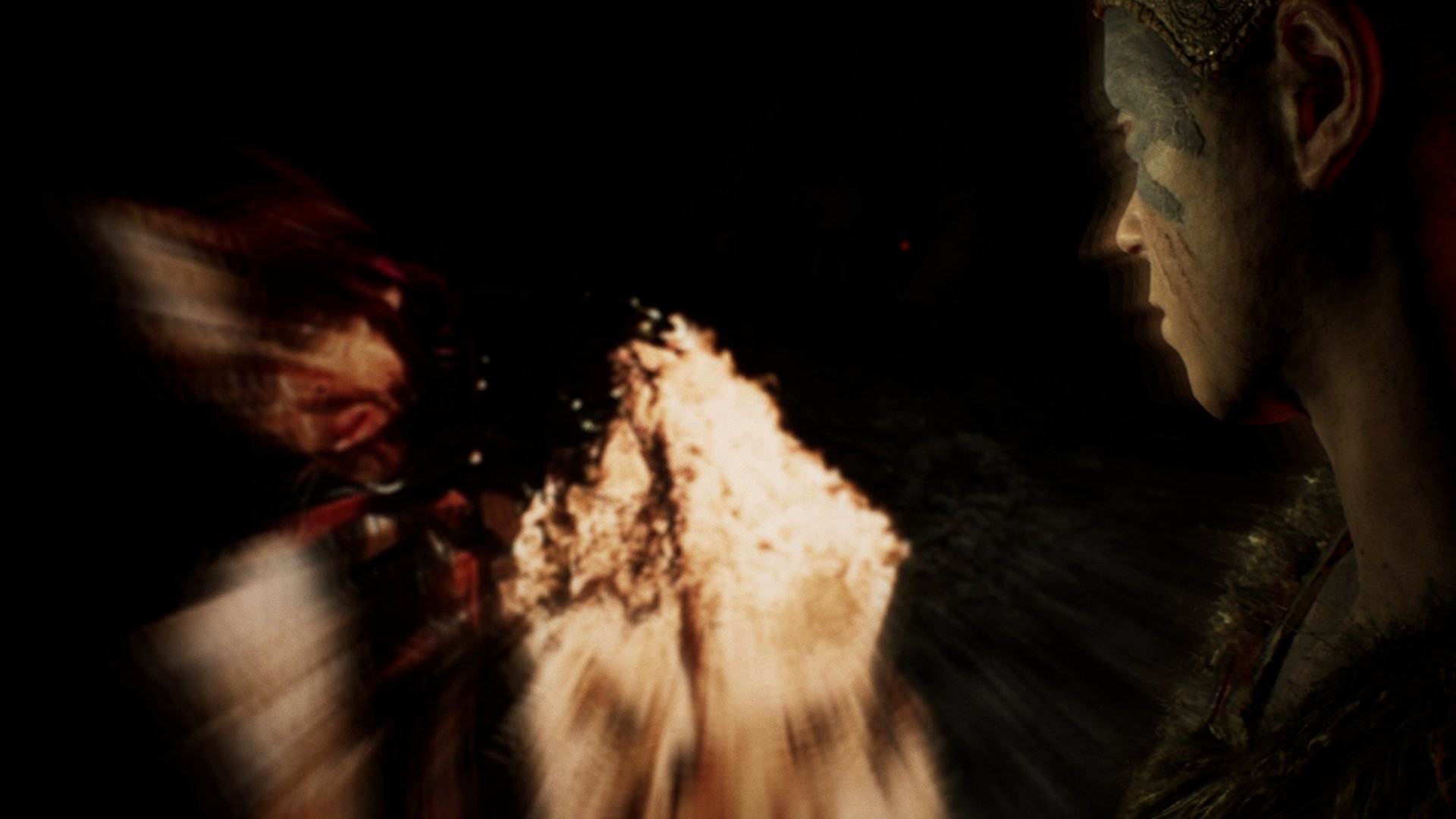
Even when difficulty is set to max, Hellblade: Senua’s Sacrifice is a very easy game. Since Senua only draws her sword when she is scripted to fight, there is never any real tension of failure. The game frequently alternates between these states and there is never any surprise for the player.
Senua also lacks imagination to hallucinate more enemy types. Hellblade: Senua’s Sacrifice does not have much variety with the encounters outside of the few boss battles which are the highlight of the experience. Since fights are predetermined, there is also no chance of encountering any roaming threats.
It was a missed opportunity to not have patrolling foes, but it was likely a concession due to the limited budget that the developers had to work with. Despite the extremely limited resources that Ninja Theory had, Hellblade: Senua’s Sacrifice is one of the most impressive looking games made in Unreal Engine 4.
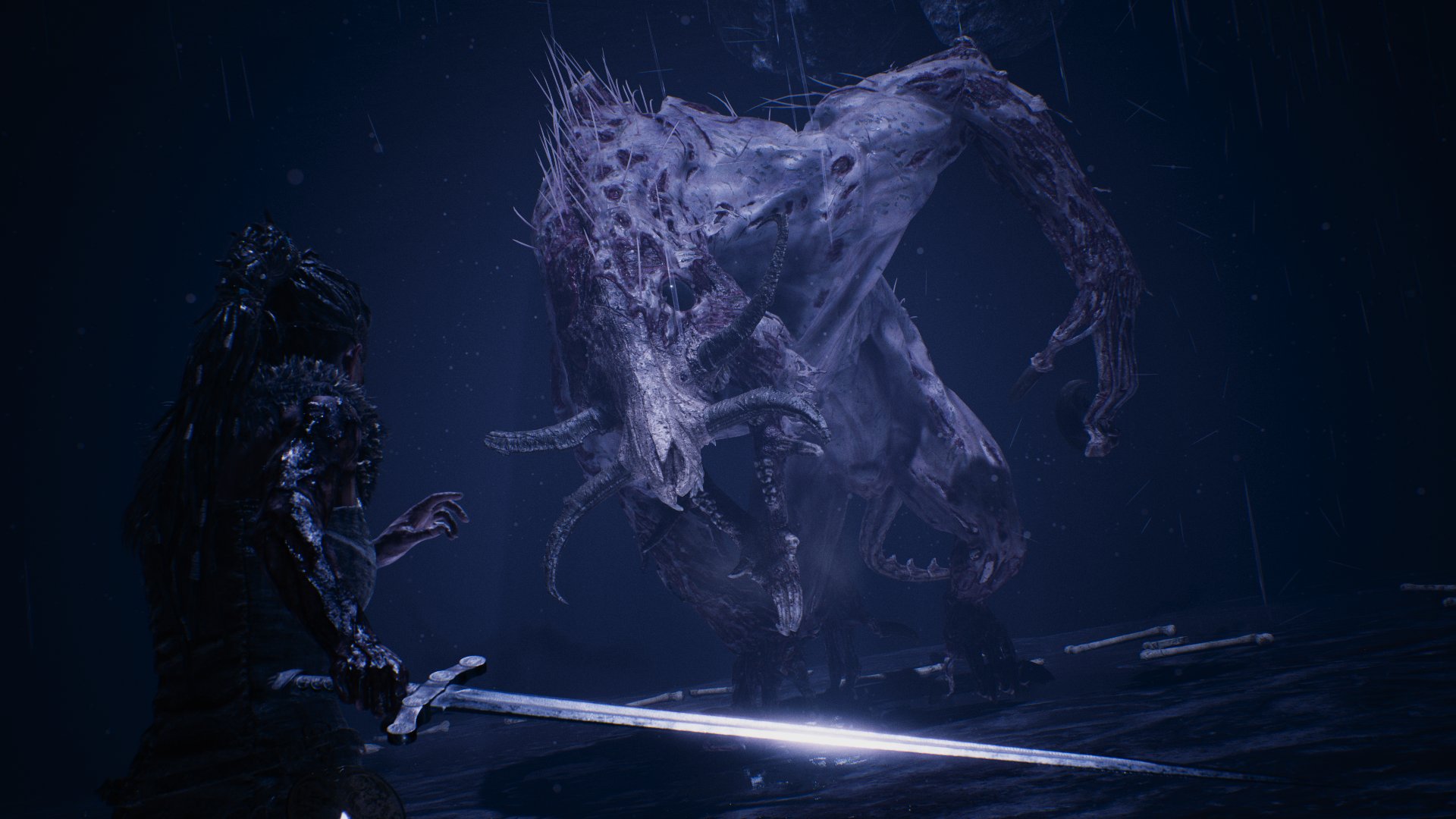
There is no question; Hellblade: Senua’s Sacrifice is a beautiful nightmare to behold. The art direction is impeccable and while there is no way of knowing how accurate the Pict garments were, the costuming feels faithful and definitely looks like something worn around 800 AD.
The world Senua lives in is utterly filthy and barely held together. The vast quantities of rotting corpses on pikes and strung up show many levels of decay. Details like buzzing flies and shriveling entrails almost make it seem like you can smell the foul stench.
To work around the low budget, Ninja Theory had very few character models that had to be made and animated. Hellblade: Senua’s Sacrifice makes use of heavily filtered live action footage of actors in costumes and composites the shots into the game world. It is an uncanny effect that ultimately works for the narrative’s theme of psychosis and something’s seen not actually belonging.

The mocap use in Hellblade: Senua’s Sacrifice is also very extensive and highly nuanced. The actress who performs as Senua delivers a harrowing and painful performance. Many scenes show this poor lady writhing around in filth and screaming in agony; face contorting in painful expressions.
Tons of details in Senua’s expressions are captured. Subtle eye twitches and quivering of her lips go a long way at making this character feel real and make her seem like she is utterly broken beyond repair.
The vistas and landscapes are breathtaking despite the harrowing wastes that will stand before you. Sure the piles of corpses and ashen bone may be depressing, but the sunset and golden skies make the moisture glisten like jewels.
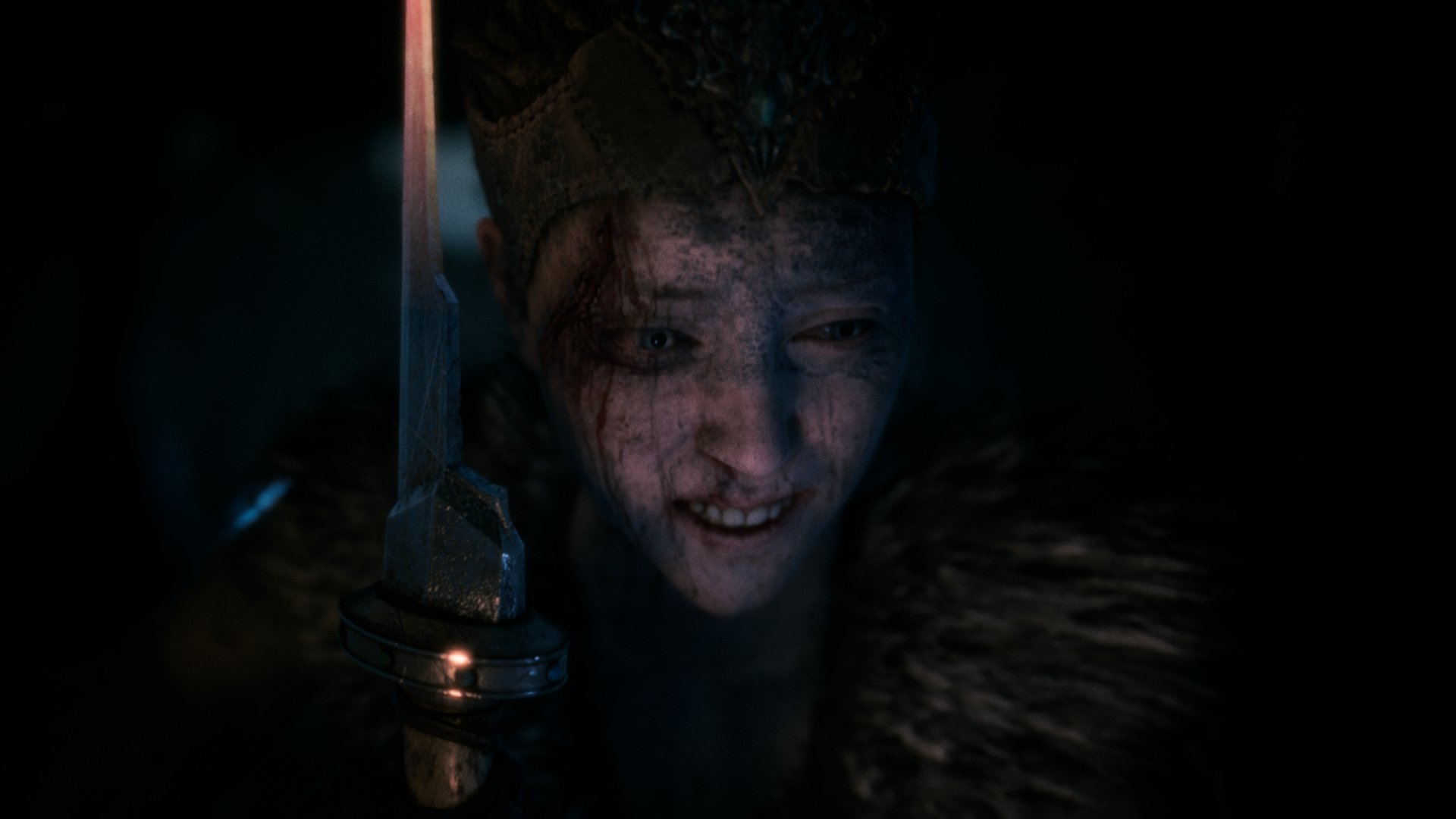
If Hellblade: Senua’s Sacrifice proves anything, it is that Ninja Theory missed their calling and should be making survival-horror games. The action gameplay is woefully basic and lacks challenge no matter what the difficulty is set to, but the production values and art direction are some of the best seen in an indie game.
Hellblade: Senua’s Sacrifice‘s atmosphere and use of symbolism show promise of what Ninja Theory could do if they put their energy towards a horror story. There are some truly surreal imagery that is the stuff of nightmares and the artists achieved it on a shoestring string budget. It is too bad that the gameplay does not live up to the amazing visuals.
Hellblade: Senua’s Sacrifice was reviewed on Xbox Series S using a copy purchased by Nichegamer. You can find additional information about Niche Gamer’s review/ethics policy here. Hellblade: Senua’s Sacrifice has been available for PlayStation 4, Steam, Nintendo Switch and Xbox One.